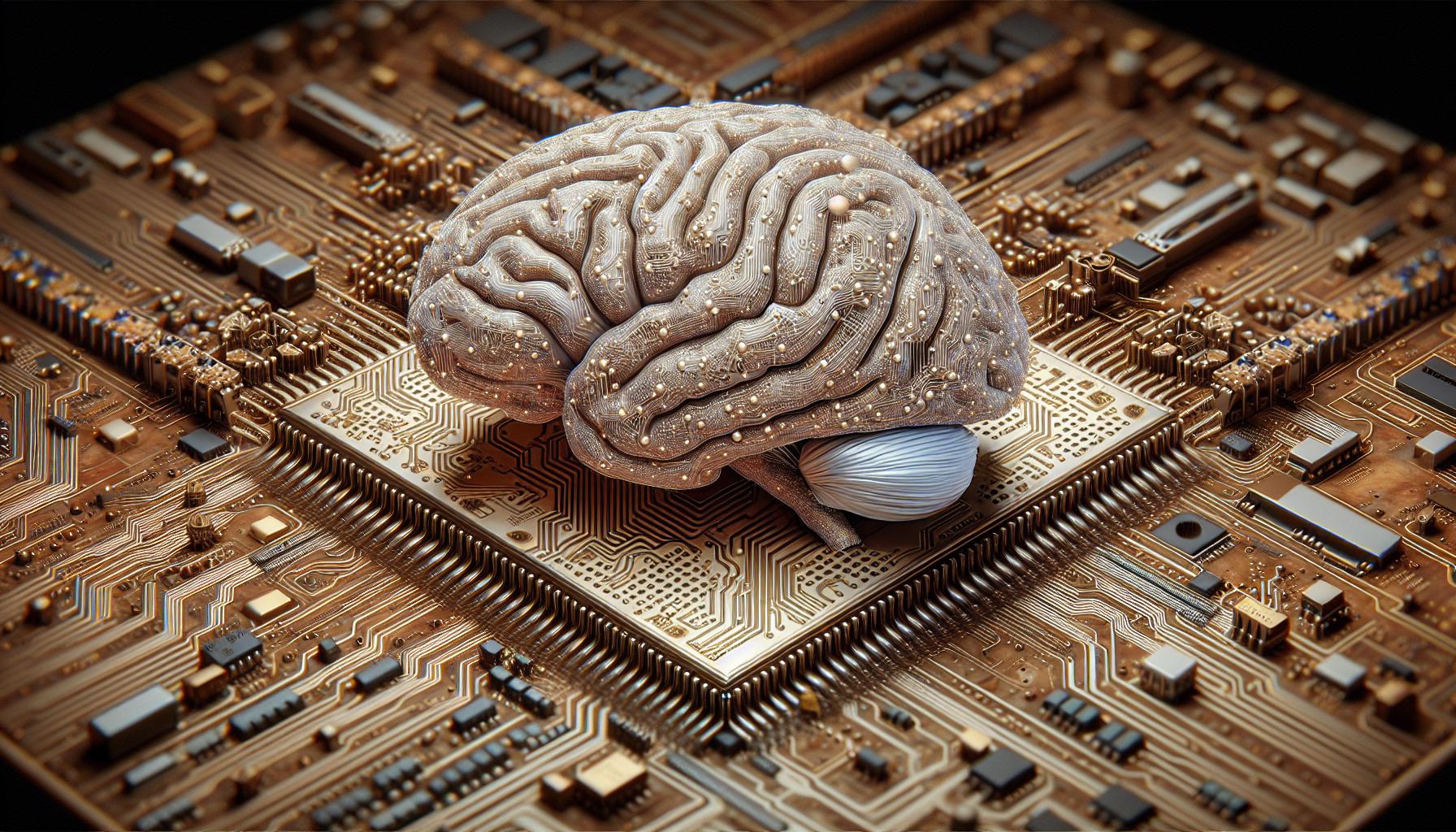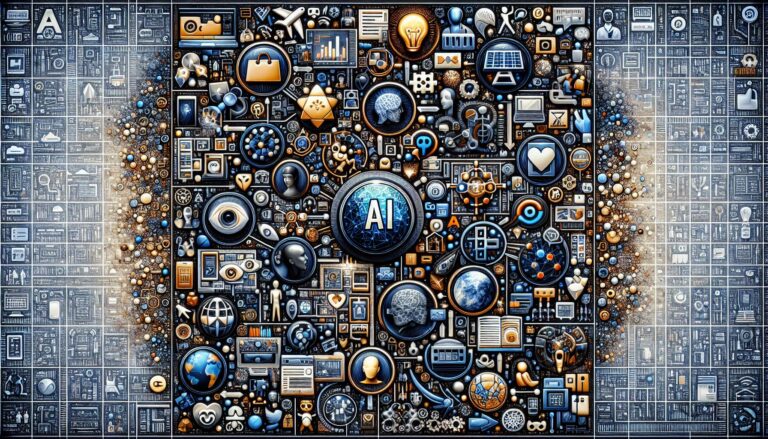Unlocking Productivity: The Power of Integrating GPT with Sheets and Docs
Last Updated on February 25, 2024 by Alex Rutherford
In the digital era, it’s all about efficiency. That’s where GPT for Sheets and Docs comes into play. This AI-powered tool can revolutionize your workflow, making document creation and data management a breeze.
GPT, or Generative Pre-trained Transformer, is a cutting-edge technology that’s been making waves in the tech world. It’s designed to understand and generate human-like text, and when applied to Sheets and Docs, it opens up a whole new world of possibilities.
Imagine creating detailed reports, insightful articles, or complex spreadsheets in a fraction of the time it usually takes. That’s the power of GPT for Sheets and Docs. Stay tuned as we delve into the ins and outs of this game-changing tool.
PowerBrain AI Chat App powered by ChatGPT & GPT-4
Download iOS: AI Chat
Download Android: AI Chat
Read more on our post about ChatGPT Apps & ChatGPT App
Key Takeaways
- GPT (Generative Pre-trained Transformer) is an AI model developed by OpenAI that is designed to generate human-like text and understand its nuances and contexts. It can be integrated into Sheets and Docs to enhance productivity and workflow efficiency.
- Microsoft has partnered with OpenAI to incorporate GPT-3 into everyday productivity tools, including Office 365, enabling AI to provide real-time text suggestions, fill in data, and predict the next steps.
- GPT for Sheets interprets cell contexts and fills in missing calculations or data, recognizing patterns and contexts to assist with data management. For Docs, GPT assists with text document creation, suggesting sentence completions, drafting replies, and even writing portions of text in line with your writing style.
- The use of GPT in Sheets and Docs goes beyond optimizing tasks—it revolutionizes workspaces by promoting increased efficiency, collaboration, and innovation without causing dependency.
- Use cases for GPT for Sheets include data organization and analysis in the finance sector and semantification of spreadsheets. For Docs, GPT aids in collaborative content creation, programming, and idea development.
- GPT integration enhances workflows in various sectors like finance and software development by enabling more time for decision-making, design, and strategizing and producing more dynamic and SEO-optimized text in content creation.
What is GPT?

Diving deeper into the world of digital tools, let’s hone in on GPT or Generative Pretrained Transformer. This is a groundbreaking technology that’s been making waves due to its highly sophisticated text-generation capabilities.
At its core, GPT is an artificial intelligence model developed by OpenAI. It’s been trained on a diverse range of internet text. This means that GPT doesn’t just understand English; it grasps the nuances, contexts, and subtleties that come with the language. It’s much like throwing a conversation with an AI that’s remarkably fluent in our language.
How does GPT work, you ask? GPT operates based on the transformer architecture for generative models. Think of it as a high-tech prediction engine. It generates text one word at a time, with each new word depending on all of the words that came before. This results in a cohesive and logical sequence of sentences.
Have you seen your Facebook posts or emails being instantly completed by some invisible force? You might have just had a run-in with a version of GPT or similar transformer models. Eager as I am to chat about applications, let’s save that for another section.
Understanding GPT is the very first step in unlocking its potential. We know it’s advanced AI, it can predict and generate human-like text. But to really see its prowess, it’s time to get down to the nitty-gritty. We’re talking applications, features and deeply incorporating it into our workflows. Get ready, folks, because this journey with GPT is only just getting started.
Introduction to GPT for Sheets and Docs

Diving deeper into GPT’s scope, it’s crucial to talk about an innovative application: GPT for Sheets and Docs. The sheer brilliance of GPT doesn’t limit itself to creating human-like text. It has proven its potential in areas like Sheets and Docs, making document creation, data manipulation, and workflow tools more versatile and intelligent.
What’s more appealing? It’s not science fiction. It’s happening here, right now. Microsoft (the tech giant that partnered with OpenAI) has initiated bringing GPT-3 technology to everyday productivity tools, including Office 365 and beyond.
Imagine drafting an email, writing a report, or managing a spreadsheet where AI understands what you’re trying to say or wants to achieve, giving you real-time suggestions, filling in data, predicting next steps, even churning out complete sentences, all as part of your workflow. It can significantly reduce time spent on mundane tasks, boost productivity, and foster an environment of seamless collaboration.
Using GPT for Sheets and Docs isn’t about replacing human intelligence. It’s about augmenting it, creating a partnership with technology that broadens our capabilities.
To break it down, GPT for Sheets aims to interpret cell contexts and fill missing data or calculations. You don’t need to manually input every single detail. GPT recognizes patterns, understands the context, and steps in to help. Meanwhile, GPT for Docs turns text document creation into a collaborative process with AI. It can suggest sentence completions, draft replies to emails, or even write portions of text, taking cues from your writing style.
In the interlinked universe of Sheets and Docs, both these applications work together to make our lives considerably more efficient.
Supercharging office productivity with AI is no longer a distant dream. It’s a transformative reality we are part of today. Packed with advanced AI technology and context understanding capabilities, GPT for Sheets and Docs is empowering businesses, individuals, and teams to redefine what’s achievable.
It’s a brave new world where AI supports and propels our endeavors. The future of productive work lies not only in what our minds can envision but also in what our technology can bring to life. Welcome to the era of elevated productivity, powered by none other than GPT, an ally for a smarter, faster, and more efficient workplace.
Benefits of Using GPT for Sheets and Docs
Let’s dive into the specifics of how this cutting-edge technology truly transforms the way we work. There’s a host of benefits that GPT offers when used for Sheets and Docs.
First off, it’s a boon when we’re dealing with massive datasets. Be it data mining, analysis, or presenting, working with big data becomes a lot smoother with GPT for Sheets. The AI understands context in cell entries and fills in missing values accurately, making the oft tedious task of data sorting and filling a breeze.
Let’s move our focus to GPT for Docs. Here, it’s about much more than just getting spelling and grammar right. GPT’s ability to suggest completions and draft responses practically redefines writing, editing, and collaboration. Long gone are the days of brainstorming sessions leading to writer’s block, as GPT for Docs lends a helping hand with real-time suggestions.
The real-time predictive text generation makes collaborative content creation efficient and hassle-free. And this isn’t restricted to simple text either – it handles complex proposals, design drafts, and even lines of code with ease! A tool like this no doubt reduces time spent on tasks and fosters healthy collaboration between team members.
Moreover, GPT integration in everyday productivity tools bridges the gap between advanced AI technology and standard workflow tools. Tools like Office 365 become supercharged, streamlining your tasks and leading to an overall improvement in productivity.
Above all, the primary aim here is to augment human capabilities, not replace them. GPT for Sheets and Docs becomes a right-hand aid, allowing for the optimal use of AI without causing dependency. It’s redefining how workspaces operate; subtly nudging them towards higher efficiency and innovation.
Use Cases of GPT for Sheets and Docs
GPT for Sheets plays a crucial role in several scenarios, particularly in fields where handling large datasets is common. One use case is the semantification of spreadsheets. Often, spreadsheets are filled with massive volumes of data and identifying specific trends or insights is cumbersome for humans. GPT for Sheets can swiftly carry out data sorting, mining relevant details from vast arrays, and bringing the most crucial points upfront.
In the finance sector, sorting and organizing data is a colossal task where accuracy is essential. With GPT for Sheets, financial analysts can efficiently manage their large datasets without sacrificing precision. This tech makes data review and projection more straightforward, hastening decision-making processes and potential achievements.
Switching to GPT for Docs, it’s a game-changer for collaborative content creation. Whether you’re crafting complex documents or whipping up a quick memo, GPT for Docs can take your ideas and help you frame them more effectively. It’s not just about perfecting the language; it’s about cultivating your thoughts on the fly.
In the programming realm, where collaborative coding is the norm, GPT for Docs offers a powerful real-time predictive text generation feature. It streamlines the code writing, cutting the task time, and fostering innovation in ideation. With the support of GPT for Docs, developers can co-create cleaner, optimized, and more innovative algorithms for enhanced application performance.
By fitting GPT within tools like Office 365, we’re doing something incredible. We’re not replacing human capabilities; we’re augmenting them, optimally using AI to lift the mundane off our shoulders. Be it sorting data, drafting a document, or writing codes, GPT is going beyond accelerating tasks – it’s pushing possibilities, stretching boundaries of productivity, and leaving room for human innovation. By leveraging GPT for Sheets and Docs, we are honing our workspaces for efficiency and innovation.
Implementing GPT for Improved Workflow

GPT for Sheets and Docs isn’t merely about reducing routine workload, it’s an instrumental tool for enhancing efficiency and improving workflows across the board. The possibilities provided by GPT integration into routine processes can redefine the way we approach tasks in different sectors.
In the realm of finance, integrating GPT into Excel or a similar spreadsheet program can steer decision-making in profitable directions. With GPT’s prowess in organizing and analyzing millions of data points, financial officials would spend less time wrestling with numbers and more time crafting data-driven strategies.
For software developers, GPT could merge into IDEs like Visual Studio Code or Atom. It can maximize productivity by predicting code, saving precious hours typically spent on tedious programming tasks. Coders can then allocate more time and cognitive energy towards design and system strategizing, which is a surefire way to breed innovation.
Content creators can implement GPT into text editors, enabling them to generate more dynamic, engaging, and SEO-optimized text. GPT would be the unseen co-author, offering suggestions and progressively learning to mirror a writer’s particular style. It’s like having your personal writing assistant helping to frame language and ideas, revitalizing the content creation process.
Integration of GPT with tools such as Office 365 augments human capabilities, and lays the groundwork for the next level of productivity and innovative practices within the workspace. Leveraging this transformative technology, organizations and individuals can navigate their work realm with enhanced efficiency and improved workflows.
As we press further into the digital age, the implementation of GPT into various software applications has a significant role to play. Rather than view it as a threat to job security, we should see it as an opportunity to redefine our professional capabilities, augmenting human intellect with artificial intelligence. It’s high time we embraced this promising shift without hesitation, taking full advantage of emerging technologies to propel us into the future of work.
Conclusion
It’s clear that GPT for Sheets and Docs is a game changer. Its integration into everyday tools is revolutionizing how we work, making processes more efficient and boosting productivity. Whether you’re a financial analyst, a software developer, or a content creator, GPT is there to augment your capabilities. It’s not just about automating tasks; it’s about empowering us to do more, to think more, and to innovate more. By embracing GPT in our software applications, we’re taking a big step towards the future of work. It’s a future where our intellect is amplified by artificial intelligence, and I’m excited to see where this journey will take us.
What are the applications of GPT for Sheets and Docs?
GPT facilitates workflow efficiency in Sheets and Docs, streamlining data analysis and fostering improved decision-making processes. Overall, it enhances productivity and boosts innovation.
How can GPT aid software developers?
In Integrated Development Environments (IDEs), GPT can predict code, reducing manual work for developers and providing them more time to focus on innovative tasks.
What are the benefits of GPT for content creators?
GPT’s integration into text editors aids content creators in generating dynamic, SEO-optimized content. It makes content creation faster and more efficient, inspiring creativity.
How does the integration of GPT with Office 365 augment human capabilities?
GPT’s integration with Office 365 amplifies humans’ work capabilities, leading to improved productivity and enhanced innovation. It provides a sophisticated intelligence layer to common productivity applications.
Why is the integration of GPT with software applications being viewed positively?
GPT’s integration with software applications furthers professional capabilities, propelling individuals and organisations into a future characterised by enhanced human intellect and constructive use of artificial intelligence.
















